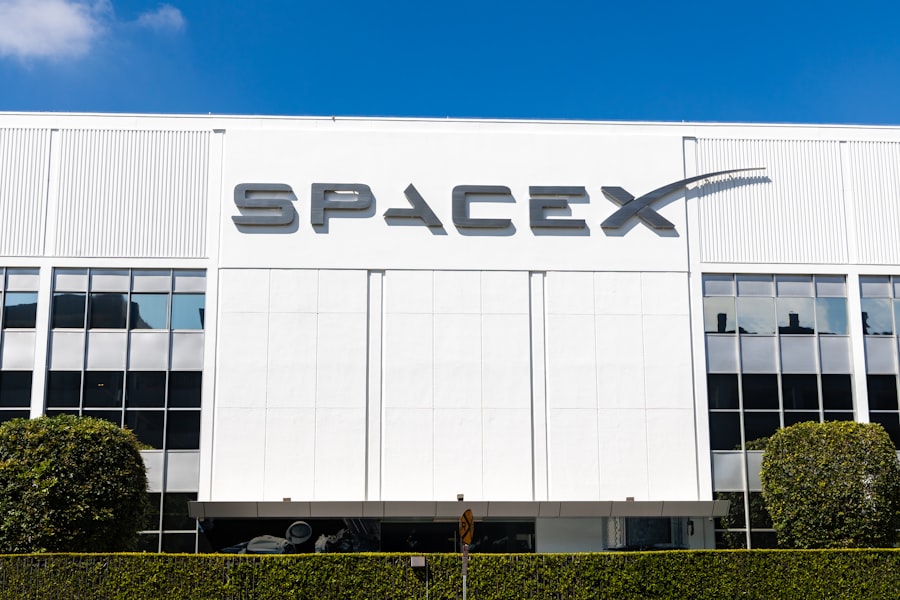The defense and aerospace industry is a critical sector that encompasses a wide range of activities, including the design, development, production, and maintenance of military equipment, aircraft, spacecraft, and related technologies. This industry plays a pivotal role in national security, providing the necessary tools and systems to protect a nation’s interests both at home and abroad. The complexity of this sector is underscored by its integration of advanced technologies, stringent regulatory requirements, and the necessity for collaboration among various stakeholders, including government agencies, private companies, and international partners.
Historically, the defense and aerospace industry has been characterized by significant investment in research and development (R&D), driven by the need for innovation to address evolving threats. The Cold War era saw a surge in military spending and technological advancements, leading to breakthroughs in missile technology, radar systems, and aircraft design. Today, the industry continues to evolve rapidly, influenced by geopolitical dynamics, emerging threats such as cyber warfare, and the increasing importance of space as a domain for both military and commercial activities.
As nations strive to maintain their strategic advantages, the defense and aerospace sector remains at the forefront of technological advancement and operational readiness.
Key Takeaways
- The defense and aerospace industry plays a crucial role in national security and technological advancement.
- Technological innovations in military equipment, such as drones and advanced weaponry, are transforming the way wars are fought.
- Developments in aircraft and spacecraft technology, including hypersonic flight and reusable rockets, are revolutionizing air and space travel.
- Advancements in cybersecurity and information warfare are essential for protecting sensitive military and government data from cyber threats.
- Emerging trends in defense and aerospace research and development, such as additive manufacturing and autonomous systems, are shaping the future of the industry.
Technological Innovations in Military Equipment
The landscape of military equipment has undergone a profound transformation due to technological innovations that enhance operational effectiveness and efficiency. One of the most significant advancements is the integration of smart technologies into weapon systems. For instance, precision-guided munitions have revolutionized warfare by allowing for targeted strikes with minimal collateral damage.
These munitions utilize GPS and laser guidance systems to ensure accuracy, thereby increasing mission success rates while reducing unintended consequences. Moreover, the development of unmanned systems has reshaped modern military operations. Drones, or unmanned aerial vehicles (UAVs), are now integral to reconnaissance, surveillance, and combat missions.
The U.S. military’s use of drones in operations against terrorist organizations exemplifies their effectiveness in gathering intelligence and executing strikes without risking pilot lives. Additionally, advancements in materials science have led to the creation of lighter, stronger materials for armor and vehicles, enhancing protection for personnel while improving mobility on the battlefield.
Developments in Aircraft and Spacecraft Technology

Aircraft technology has seen remarkable advancements over the past few decades, driven by the need for greater speed, efficiency, and versatility. The introduction of stealth technology has allowed military aircraft to evade radar detection, significantly enhancing their survivability in hostile environments. The F-35 Lightning II is a prime example of this innovation; its design incorporates advanced materials and shapes that minimize its radar cross-section while providing unparalleled capabilities in air-to-air and air-to-ground combat.
In parallel with developments in aircraft technology, spacecraft technology has also progressed significantly. The increasing interest in space exploration and satellite deployment has led to innovations in propulsion systems, satellite miniaturization, and reusable launch vehicles. SpaceX’s Falcon 9 rocket has set new standards for cost-effective access to space by successfully landing its first stage for reuse.
This not only reduces launch costs but also paves the way for more frequent missions, whether for military reconnaissance or commercial satellite deployment.
Advancements in Cybersecurity and Information Warfare
| Metrics | 2018 | 2019 | 2020 |
|---|---|---|---|
| Number of Cybersecurity Breaches | 1,244 | 1,473 | 1,001 |
| Investment in Cybersecurity | 114 billion | 124 billion | 132 billion |
| Number of Cybersecurity Professionals | 780,000 | 900,000 | 1,000,000 |
| Global Cybersecurity Market Size | 138 billion | 149 billion | 167 billion |
As warfare increasingly shifts into the digital realm, cybersecurity has become a paramount concern for defense organizations worldwide. The rise of information warfare—where adversaries use cyber capabilities to disrupt communications, steal sensitive data, or manipulate public perception—has necessitated robust cybersecurity measures. Governments are investing heavily in developing advanced cyber defense systems to protect critical infrastructure from cyberattacks that could cripple military operations or compromise national security.
Moreover, the integration of artificial intelligence (AI) into cybersecurity strategies is transforming how defense organizations approach threat detection and response. AI algorithms can analyze vast amounts of data in real-time to identify anomalies that may indicate a cyber threat. For example, the U.S.
Department of Defense has implemented AI-driven systems that can autonomously respond to cyber incidents, significantly reducing response times and enhancing overall security posture. This proactive approach is essential as adversaries continue to develop sophisticated cyber capabilities that challenge traditional defense mechanisms.
Emerging Trends in Defense and Aerospace Research and Development
The defense and aerospace industry is witnessing several emerging trends that are shaping its future direction. One notable trend is the increasing emphasis on sustainability within military operations. As environmental concerns grow globally, defense organizations are exploring ways to reduce their carbon footprint through the adoption of green technologies.
This includes developing alternative fuels for aircraft and vehicles as well as investing in energy-efficient systems that minimize resource consumption during operations. Another significant trend is the focus on modularity and adaptability in defense systems. As threats evolve rapidly, there is a growing recognition that military equipment must be flexible enough to adapt to changing operational requirements.
This has led to the development of modular weapon systems that can be easily upgraded or reconfigured based on mission needs. For instance, naval vessels are increasingly designed with modular components that allow for quick adaptation to different mission profiles, enhancing their operational versatility.
Impact of Artificial Intelligence and Robotics on Defense and Aerospace

Artificial intelligence (AI) and robotics are revolutionizing the defense and aerospace sectors by enhancing decision-making processes and automating various tasks. AI algorithms can analyze vast datasets from multiple sources to provide actionable insights for military planners and commanders. This capability allows for more informed decision-making during complex operations where time is critical.
For example, AI-driven simulations can model various combat scenarios, helping military leaders assess potential outcomes before engaging in actual operations. Robotics also plays a crucial role in modern warfare by enabling remote operations in hazardous environments. Unmanned ground vehicles (UGVs) are increasingly deployed for reconnaissance missions or bomb disposal tasks, reducing the risk to human personnel.
The U.S. Army’s use of robotic systems like the PackBot demonstrates how these technologies can enhance situational awareness while keeping soldiers out of harm’s way. Furthermore, advancements in autonomous systems are paving the way for future combat scenarios where robots may work alongside human soldiers in coordinated operations.
International Collaboration and Partnerships in the Defense and Aerospace Industry
International collaboration is essential in the defense and aerospace industry as nations recognize that many security challenges transcend borders. Joint ventures between countries often lead to shared technological advancements and cost savings through collaborative R&D efforts. For instance, NATO member countries frequently engage in joint exercises and projects aimed at enhancing interoperability among their armed forces.
One prominent example of international collaboration is the Joint Strike Fighter program involving multiple nations working together to develop the F-35 Lightning II fighter jet. This program not only facilitates shared technological advancements but also strengthens diplomatic ties among participating countries. Additionally, partnerships between private companies across borders are becoming increasingly common as firms seek to leverage each other’s expertise in specific areas such as cybersecurity or advanced materials.
Future Challenges and Opportunities in Defense and Aerospace Industry
The defense and aerospace industry faces numerous challenges as it navigates an increasingly complex global landscape. One significant challenge is the rapid pace of technological change; staying ahead of adversaries requires continuous investment in R&D while managing budget constraints imposed by governments worldwide. Additionally, geopolitical tensions can lead to unpredictable shifts in defense priorities, complicating long-term planning for both public agencies and private contractors.
However, these challenges also present opportunities for innovation and growth within the sector. The increasing reliance on advanced technologies such as AI, robotics, and cybersecurity solutions creates a demand for skilled professionals capable of driving these innovations forward. Furthermore, as nations recognize the importance of space as a strategic domain, opportunities abound for companies involved in satellite technology, space exploration, and related services.
In conclusion, while the defense and aerospace industry faces significant challenges ahead—ranging from technological advancements to geopolitical uncertainties—the potential for growth through innovation remains robust. As nations continue to invest in their defense capabilities while fostering international partnerships, the industry will likely evolve into an even more dynamic sector with far-reaching implications for global security.


